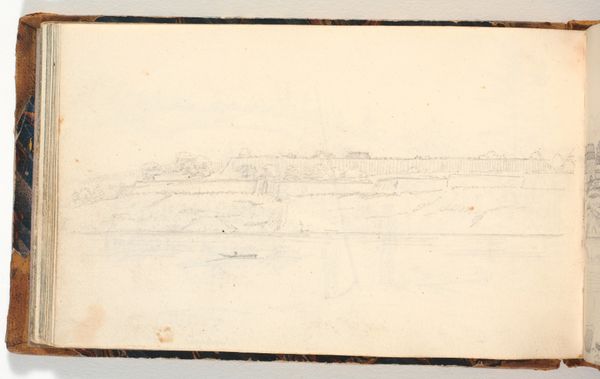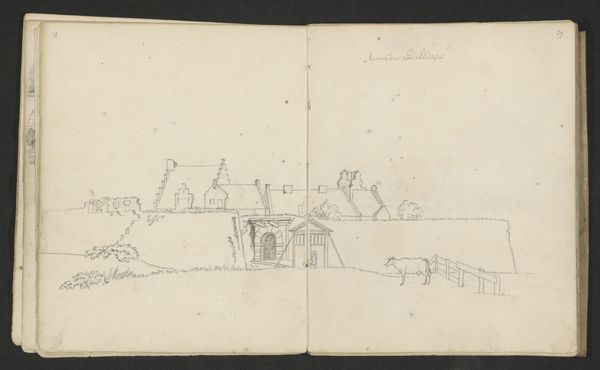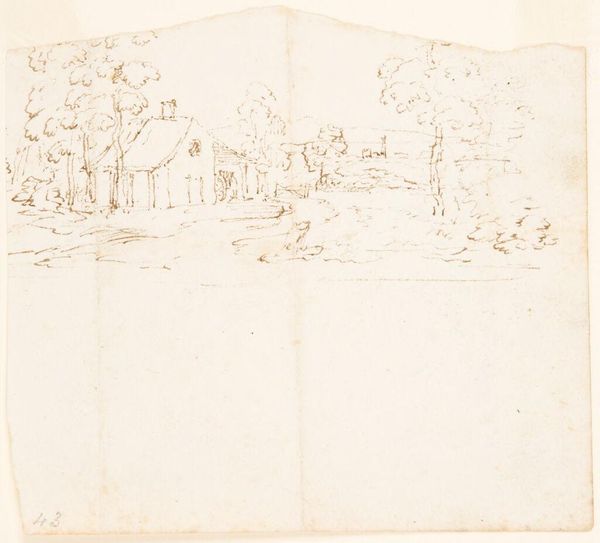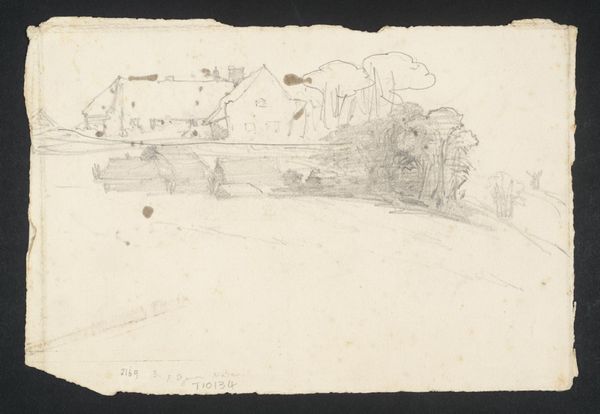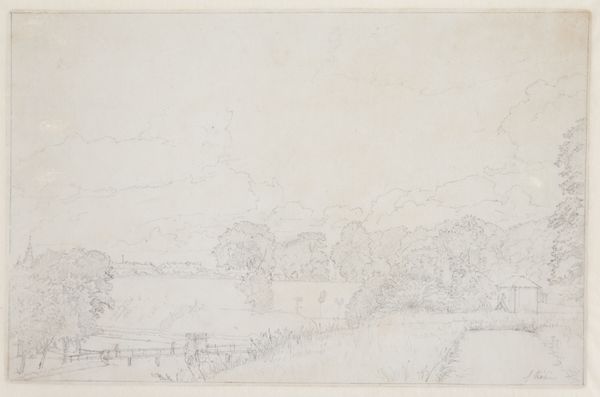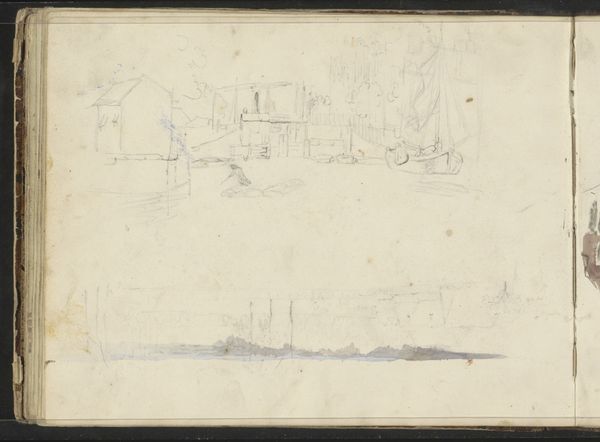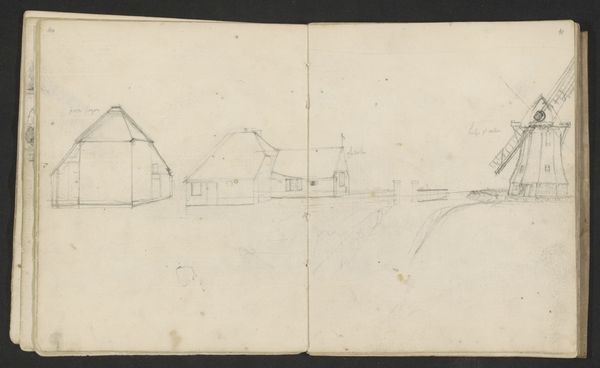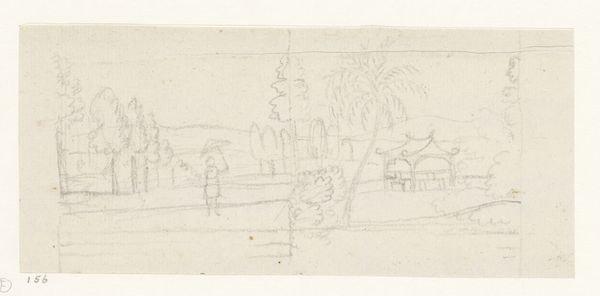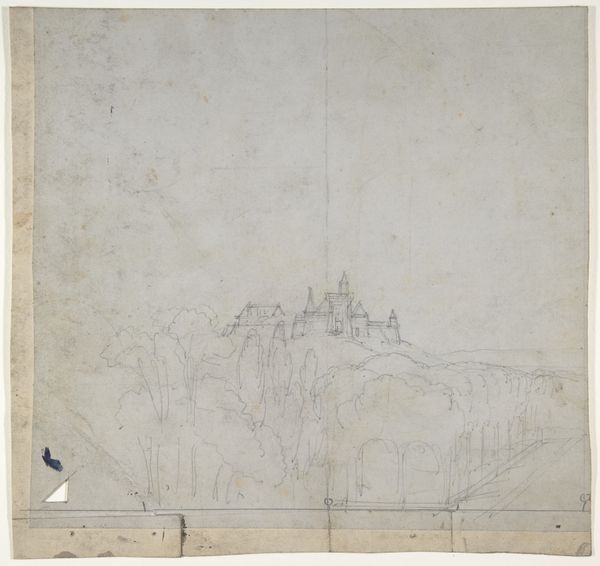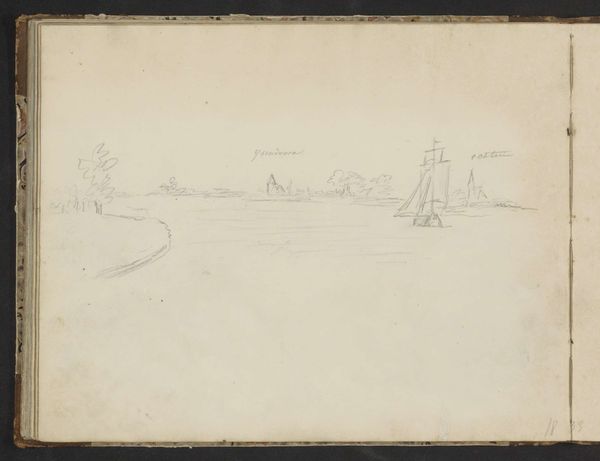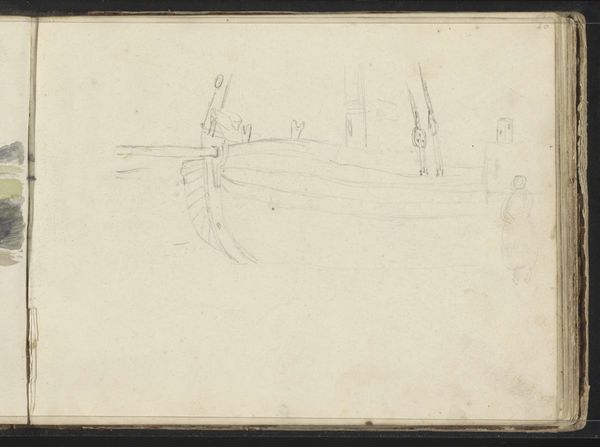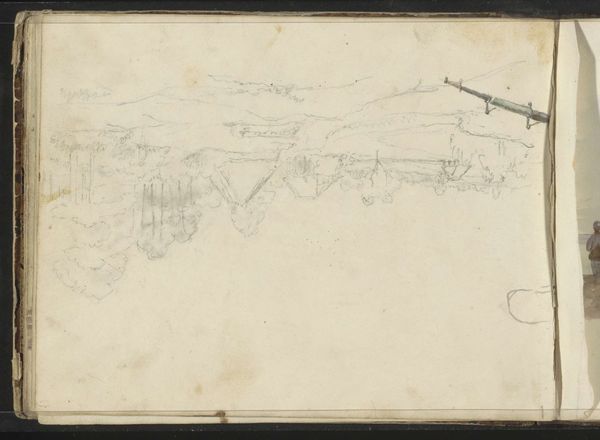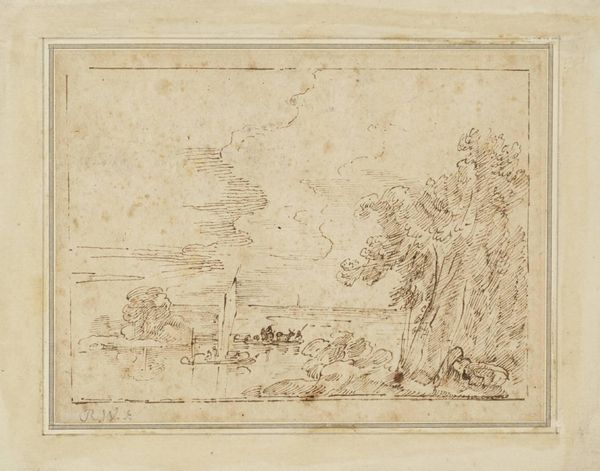
drawing, paper, pencil
#
drawing
#
landscape
#
paper
#
romanticism
#
pencil
Dimensions: sheet: 6 1/2 x 21 1/4 in. (16.5 x 54 cm)
Copyright: Public Domain
Curator: Standing before us is a "Landscape Sketch," rendered anonymously between 1824 and 1840. Executed in pencil on paper, this drawing resides at the Metropolitan Museum of Art. Editor: The initial impression is one of quietude. The scene feels sparsely populated, almost like a ghost of a landscape, barely tethered to reality. The paper's tone only enhances this feeling of faded memory. Curator: It’s intriguing how an uncredited artist captures the Romantic ideal. Landscape painting during this era, especially as practiced publicly through exhibitions and academies, frequently evoked emotions of awe and solitude amidst nature's grandeur. But this is so private and subtle by contrast. Editor: Yes, that subtlety shifts it. Here, Romanticism feels internalized. Instead of celebrating raw, untamed nature for a public, we observe nature through a personal filter. This is nature processed, understood through human contemplation and a feeling of melancholy perhaps? Note how the drawing only outlines the essence, hinting more than declaring. Curator: That restraint could represent the artist’s intent – to document an emotional state. What symbols stand out for you in the drawing itself? Does it reference a particular setting, real or allegorical? Editor: The trees strike me most forcefully. They don't have precise forms, just clustered outlines—like stand-ins or emblems for something greater. The faint lines suggest a feeling of longing rather than a factual recording of a specific tree or locale. If we accept the psychological weight they bear, could these not be markers of changing times and loss? A feeling widespread in the early 19th century across Europe. Curator: I am so intrigued by the possibility that even an ostensibly unburdened landscape might echo significant sociopolitical undercurrents. Considering how nature often reflects the broader historical context in art, there’s a chance that themes of yearning and temporal shift could find subtle expression. Editor: This little pencil sketch on paper holds bigger meanings. The understated simplicity is deeply affecting—inviting introspection and perhaps a somber contemplation on time itself. Curator: Absolutely. And by observing such artwork, we gain further comprehension of cultural consciousness of landscape in that period. Thank you for sharing such great insight.
Comments
No comments
Be the first to comment and join the conversation on the ultimate creative platform.
